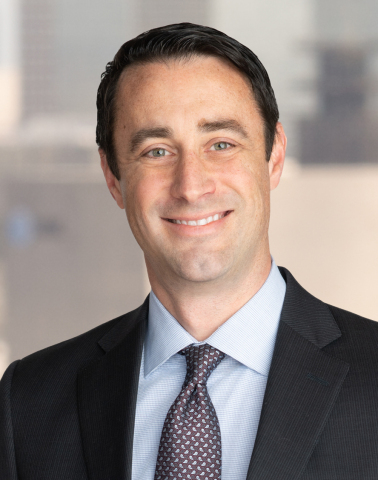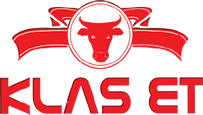Contents
Management must identify the “optimal mix” of financing – the capital structure where the cost of capital is minimized so that the firm’s value can be maximized. The economic conditions in the form of demand and supply of capital as well as expectations with respect to inflation also affect the cost of capital. If the demand for funds in the economy increases, lenders will automatically increase the required rate of return and vice versa. The return an investor receives on a company security is the cost of that safety to the company that issued it. A company’s total price of capital is a mixture of returns wanted to compensate all creditors and stockholders.
The cost of capital is a minimum rate of return required to be earned on investment to keep the market value of the shares unchanged. It is the minimum rate of return the firm earns as its investment in order to satisfy the expectations of investors, who provide funds to the firm. The weighted average cost of capital is the combined cost of each component of funds employed by the firm.

Evaluation of the financial performance will involve a comparison of actual profitabilities of the project undertaken with the projected overall cost of capital. Similarly the actual cost of raising the funds can be analysed with the estimated figures and an appraisal of the actual costs incurred in raising the required funds. It is the aggregate of the cost of capital from all sources of funds i.e., debt equity and preference capital and other loans. It is also called weighted cost of capital or composite cost of capital or over all capital mix. Marginal cost is the average cost of a new fund required to be raised by the company. So the current rate of interest on long term debt is treated as the marginal cost of capital.
How to Calculate Cost of Capital?
Since, in a project, we have to use a variety of sources to meet our entire capital requirement, the overall cost of capital for the entire project would be the weighted average cost of capital . These objectives can be achieved only when the firm’s average cost of financing is lower than its return on investment. This requires the computation of overall or average cost of capital.
Higher the liquidity available with an investment, lower would be the premium demanded by the investor. If the investment is not easily marketable, then the investors may add a premium for this also and consequently demand a higher rate of return. Thus, a agency’s cost of capital may be defined as “the speed of return the firm requires factors affecting cost of capital from investment in order to enhance the worth of the agency out there place”. The IRR technique has several disadvantages compared to the NPV method, though only one disadvantage is mentioned here for functions of brevity. Further details about potential issues with the IRR method could also be obtained from most finance textbooks.
- As the amount of dividend payable on preference shares is not a tax- deductible expenditure, there is no question of further adjustment for tax benefit.
- This minimal acceptable IRR for one specific company might be 15% while for others could possibly be 20% or 25% depending on many components, particularly market circumstances.
- The cost of equity is the expected rate of return for the company’s shareholders.
Investors may also use the term to refer to an evaluation of an investment’s potential return in relation to its cost and its risks. The models state that investors will expect a return that is the risk-free return plus the security’s sensitivity to market risk (β) times the market risk premium. According to this approach, specific costs are assigned weights in proportion to funds to be raised from each source to the total funds to be raised. This approach presumes that the new project is to be financed wholly by raising fresh capital. The company, by retaining the profits, prohibits the shareholder from earnings these returns. As such, the company is required to earn on the retained earnings at least equal to the rate which would have been earned by the shareholders if they were distributed to them.
Majority of raw material in pharma industry, diagnostic kits, high end equipment’s are imported outside India. With increase in dollar rate by ~10% there will definitely push by this supply chains to shift the cost burden to the hospitals and to the end customers. I believe that in current scenario additional cost needs to be absorbed between suppliers and hospitals, as end customers may not be able to absorb it considering decreasing income levels. High industry concentration will have positive impact on cost of debt fund. As we have been discussing above, a firm hascontrol over its capital structure, targeting anoptimal capital structure.
In case of the net present value method, the cost of capital is used as the discounting rate for discounting the future inflow of funds. Any project resulting into positive net present value only will be accepted. Explicit cost is the one which is attached with the source of capital explicit or apparently. In case of the debt capital, the interest which the company is required to pay on the same is explicit cost of capital. Marginal cost refers to the incremental cost attached with new funds raised by the company. Thus, the cost of capital is also referred to as the discounting rate to determine the present value of the returns.
Stock Repurchases
Secondly, this approach assumes that the company will not earn on its retained earnings and that the retained earnings will not result in either appreciation of the market price or increase in dividends. This assumption can be a wrong assumption which may lead to wrong conclusions. When an investor purchases a security with significant risk, an opportunity for additional returns is necessary to make the investment attractive.

All the articles you read in this site are contributed by users like you, with a single vision to liberate knowledge. Gain in-demand industry knowledge and hands-on practice that will help you stand out from the competition and become a world-class financial analyst. The Thomson Financial league tables show that global debt issuance exceeds equity issuance with a 90 to 10 margin.
This is also called the Dividend/Price Ratio Method or D/P Ratio Method. This Method is based on the thinking that when an investor invests his savings in a company, he expects a dividend at least at the current rate of return. As such cost of equity capital is calculated on the basis of https://1investing.in/ the future stream of dividends which the shareholders expect to receive from a company. According to this approach, before an investor pays a certain price for purchasing equity shares of the company, he expects a certain return on the investment which is in the form of the dividend.
Abhijeet Sharma, a lucid & crisp write up that sums up the attributes of the sector. Overall, these changes would result in further dip in attractiveness of the sector and hence detoriation of accessibility of services. High Barriers to entry for healthcare industry, it takes significant amount of capital to be invested with long gestation period. Also there is many regulatory compliance and license to be procured before setting up a manufacturing plant or hospital.
Financial Risk:
The financial risk is an another type of risk which can affect the cost of capital of the firm. The particular composition and mixing of different sources of finance, known as the financial plan or the capital structure, can affect the return available to the investors. The financial risk is often defined as the likelihood that the firm would not be able to meet its fixed financial charges. It is related to the response of the firm’s earning per share to a variation in EBIT. The financial risk is affected by the capital structure or the financial plan of the firm. Higher the proportion of fixed cost securities in the overall capital structure, greater would be the financial risk.

This is positive for the industry as it will discourage new entrants and if some new players enters the market than it will take time to set-up and operate. The higher the risk, the higher the required rate of return and vice versa. We can classify the cost of capital into the following broad classifications.
b) Purchasing power risk premium:
Investment in countries other than the home country has a bearing on their exchange rate risk. Economic boom and recession also play a very important role in determining the cost of capital by impacting the interest rates in the market. All capital providers try to invest in a manner that maximizes returns. At the minimum, an investment should beat inflation, and there should be some real income. In simple words, you invested money that could buy you a particular basket of things a year ago. After a year, when your investment is matured, and you receive money, you would at least expect that money should be able to buy that same basket of things.
Financial and investment decisions
Further, the interest payable on the debentures has to be viewed from the angle of the amount actually received on their issue. So it is the internal rate of return of cash flows of financing opportunities. The concept of the cost of capital plays an important role in corporate finance – theory and practice. Cost of capital is the measurement of the sacrifice made by the investors in order to the capital formation with a view to get a fair return on investment.

